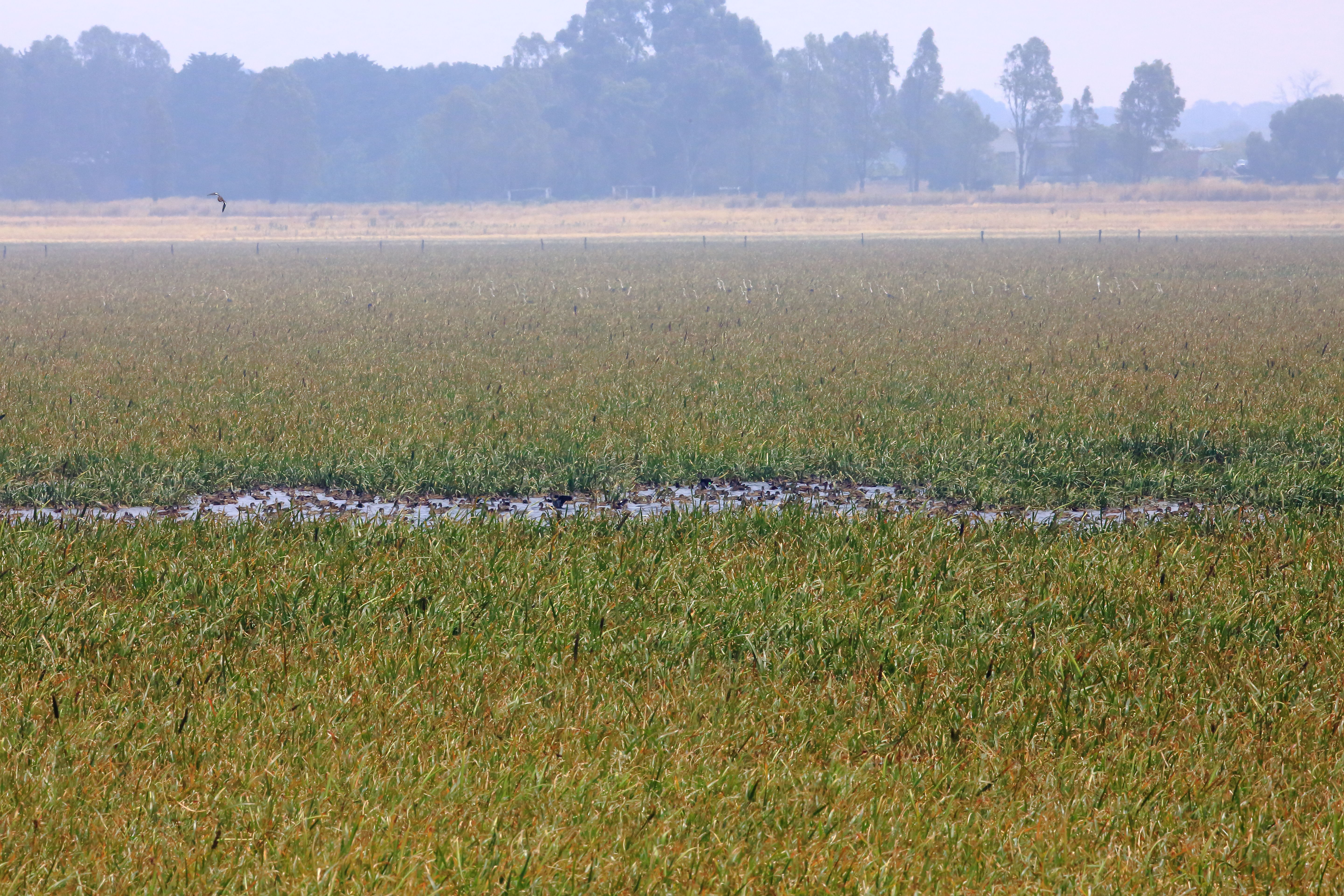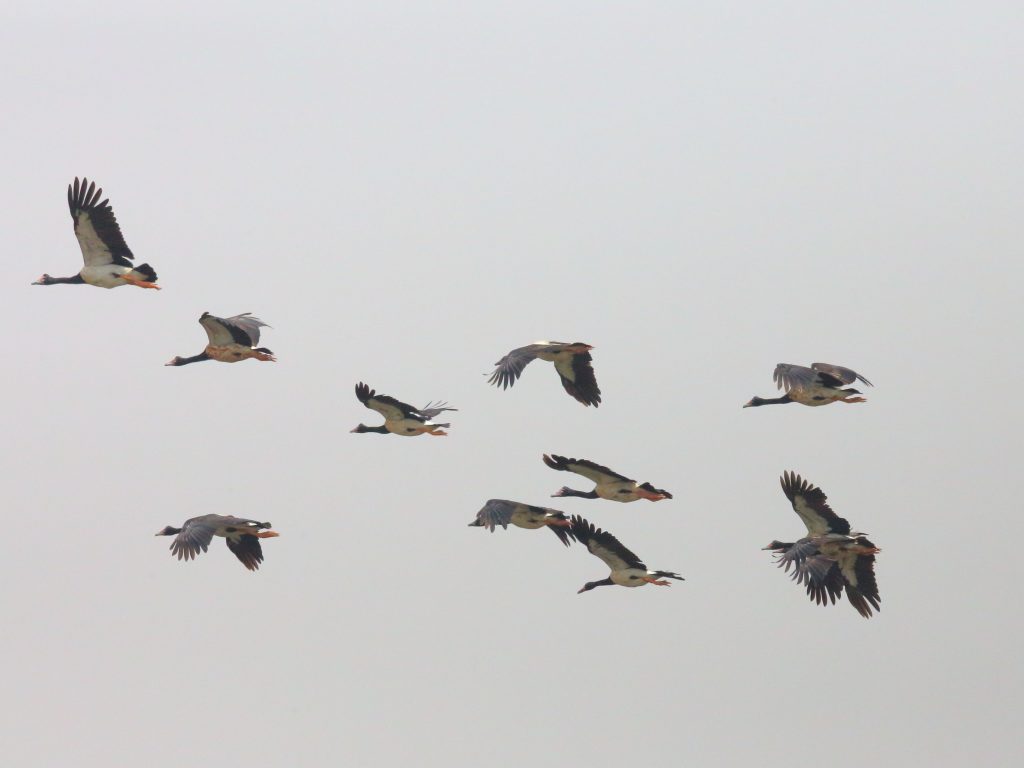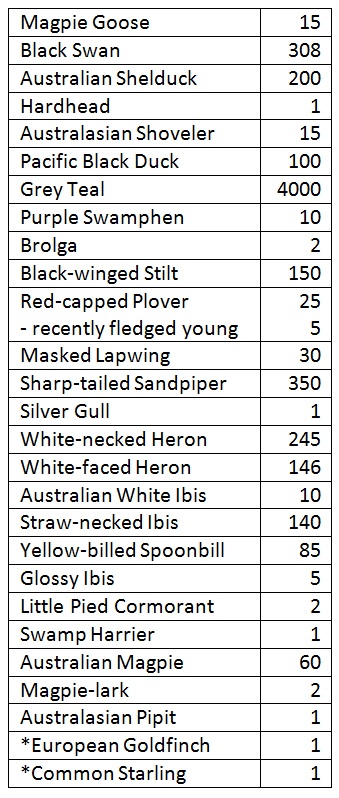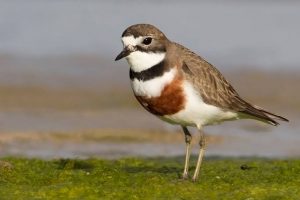New surprises at Green Swamp – some very special birds appear at this important summer refuge habitat
One of the great joys of wetland restoration comes from the follow up surveys undertaken to monitor the outcomes of on-ground actions. Restoring productive wetlands that are able to hold water through summer and into autumn provides much sought after habitat for birds that are dependent on free standing water. The more permanent wetland elements provide important summer and drought refuge for a wide variety of Australian bird species, with seasonal migrations to the wetlands from regions across large parts of Australia as inland habitat dries out on a seasonal basis or because of drought.
The habitat values provided for these species at Green Swamp generally relate to sustaining the individuals within the population, rather than providing for the higher order demands of non-breeding migratory species or species reliant on the region for breeding. But, when the wetland is productive, provides a range of habitats, and stays wet for longer, it is possible to see the wonderful diversity and abundance that can arise when a variety of local, migratory and nomadic water birds and waders all come together.
Recently Bryan Haywood and I were carrying out terrestrial and waterbird surveys at Green Swamp, our newest permanent NGT Reserve. The smoke was heavy in the air as we walked up onto the northern lunette and overlooked the dense green beds of Triglochin (Water Ribbons) that dominate much of Green Swamp. The first cursory glance saw the usual collection of large ducks and swans on the narrow strip of open water midway along the western side of the wetland. Our first thoughts were to do a quick count and then head home for lunch. It was at this point that we put our binoculars to our eyes and stared in disbelief at the 245 White-necked Herons spread across the wetland (Figure 1). Neither of us had seen anything like this number in one wetland before. Then there was a roar as several thousand previously invisible ducks and teal took off and circled the swamp. With a new objective, we headed back to the car to collect the spotting scope and start a very detailed count of the wetland avifauna.

Fig 1. Barely visible Grey Teal and White-necked Heron on Green Swamp. There are thousands of teal hidden in this photo (Click to enlarge) (Photo: Greg Kerr).
As we circumnavigated the wetland, with the aid of a Swamp Harrier, more and more birds emerged out of the dense tangle of water ribbons to circle briefly before landing and disappearing again into the vegetation. In the end we counted nearly 6,000 birds from 27 species, but who knows how many were actually there still happily hunkered down in the vegetation. At one point over 4,000 ducks and teal were circling in three or four swirling flocks and suddenly we noticed seven Magpie Geese woven into the mix. Now that was special!
At the time of European settlement in Australia in 1788, Magpie Geese (Anseranas semipalmata) were abundant, as they remain today across northern Australia, but were also common on swamps and on coastal and inland river floodplains in south-eastern Australia. However, by the early 1900s Magpie Geese had suffered a serious contraction of range from the south-east. Despite protection of the species from hunting in the 1930s in eastern and southern states, they still ultimately became locally extinct in Victoria and south-east South Australia. That is, until successful reintroductions in Victoria (e.g. at Tower Hill in 1974), New South Wales and South Australia (at Bool Lagoon in the 1980s).
The species has now returned to parts of its former range. But, until recently, this was predominantly coastal wetlands in Victoria in small numbers. We watched them land and through the spotting scope suspected there were more there, but it was not possible to tell for certain. Then they, and more, flew again; and this time we were able to get photographs (Figure 3 and 4) and confirm a count of 15.
That wasn’t the end of the new species (five Glossy Ibis) for the wetland or the delight of discovery, including two Brolga and a range of shorebirds. I’ve put the full list below:
This set of new discoveries builds upon those seen in earlier surveys at this wetland.
In other significant news for this wetland, a large population of migratory Double-banded Plovers has also been recorded feeding at Green Swamp over two years now.
This unique species breeds in New Zealand in spring and summer and then migrates to Australia from February to early September where it is typically found on coastal beaches and tidal mud flats, and less commonly in both salt and freshwater wetlands. This is a strange migration as it is the only east to west migration across oceans of any species in the world. The presence of this species feeding on the shallower area of marsh found in the ‘big toe’ to the north-west corner of Green Swamp is a great discovery. There are thought to be around 12,000 Double-banded Plovers in the world (Hansen et al. 2016), so having around 100 visit Green Swamp annually is another indication of the importance of this wetland.
You can learn more about Green Swamp and other NGT permanent reserves here.
References:
Hansen, B. D., R. A. Fuller, D. Watkins, D. I. Rogers, R. S. Clemens, M. Newman, E. J. Woehler, and D. R. Weller. 2016. Revision of the East Asian-Australasian Flyway Population Estimates for 37 listed Migratory Shorebird Species. Unpublished report for the Department of the Environment. BirdLife Australia, Melbourne, Victoria. http://www.environment.gov.au/system/files/resources/da31ad38-f874-4746-a971-5510527694a4/files/revision-east-asian-australasian-flyway-population-sept-2016.pdf




